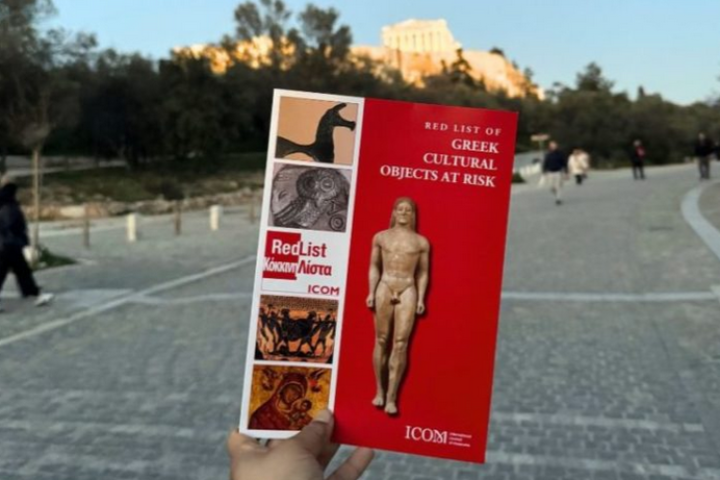March 12, 2025
ICOM Red List of Greek Cultural Objects at Risk Heritage Protection

ICOM and ICOM Greece, in cooperation with the Hellenic Ministry of Culture, are proud to announce the launch of the ICOM Red List of Greek Cultural Objects at Risk, a significant tool designed to help fight the illicit trafficking of Greek cultural heritage.
The Red List identifies categories of cultural objects most at risk of illegal trade, supporting law enforcement, museums, cultural institutions, and the art market in recognising and preventing the illicit trafficking of these objects.
The ICOM Red Lists are internationally recognised resources that are developed in collaboration with experts from museums, cultural institutions, and law enforcement agencies. This new Red List represents the latest addition to the long history of one of the most essential ICOM tools for heritage protection against illicit trafficking, highlighting the urgent need to safeguard Greece’s rich heritage legacy.
“Due to its extraordinary history, heritage, and culture of this country, Greece is a primary target for illicit trade. Greek cultural heritage remains particularly vulnerable to clandestine excavations in particular. I am deeply thankful to each of the experts and professionals from Greek museums and institutions whose contributions have been pivotal in creating this new Red List!”
– Medea S. Ekner, ICOM Director General
Protecting Greek Cultural Heritage
The cultural heritage of Greece faces significant threats due to theft, looting, and illicit trafficking. Numerous Greek antiquities have been unlawfully removed from their place of origin, ending up in collections or auction houses worldwide. Despite efforts to curb this phenomenon, illegal excavations and sales continue to endanger Greece’s cultural heritage. This new Red List addresses this ongoing issue by providing a comprehensive guide to categories of objects that are particularly susceptible to trafficking, ensuring that they can be easily identified by authorities and stakeholders.
“The Red Lists are mainly aimed at sensitise the authorities, such as police or customs officials, as well as those involved in the purchase of antiquities and works of art. The Red Lists draw attention to specific categories of cultural goods that are at risk of being trafficked. The importance of the list is recognised globally and is widely used to combat illicit trafficking.
Here today, at the Acropolis Museum, the number and prestige of the participants in today’s event, which is organized by the Greek Section of ICOM in cooperation with the Ministry of Culture through the Directorate for the Protection and Documentation of Cultural Property, highlights the recognition of our country’s work in the field of combating illicit trafficking. At the same time, today’s event comes to demonstrate that the most appropriate measure to curb illicit trafficking is international cooperation and international understanding.”
– Lina Mendoni, Minister of Culture, Greece
The development of this Red List was a collaborative effort undertaken in close partnership with ICOM Greece and the Directorate for the Protection and Documentation of Cultural Goods of the Hellenic Ministry of Culture, involving Greek experts, including archaeologists and museum professionals. The list features nine categories of cultural objects at risk and includes 52 photographic examples from major Greek museum collections.
“Greece’s commitment to cultural heritage protection is anything but new. For decades Greek authorities and dedicated professionals, such as ICOM Greece, have joined forces to develop a strong legal framework and operational tools to protect their immense cultural heritage. With the new ICOM Red List for Greek Cultural Objects at Risk, another stone is added to this edifice of cultural heritage protection.”
-Sophie Delepierre, Head of ICOM Heritage Protection Department
The Red List is accessible online and is distributed to law enforcement agencies (customs and police), museums, and the art market worldwide. The list serves as a vital crucial reference to help authorities and cultural heritage professionals identify objects at risk and take action against illicit trafficking.
The Red List is available here.